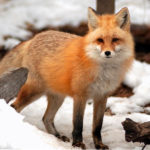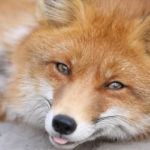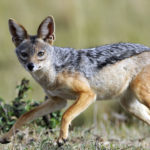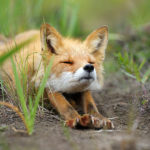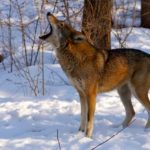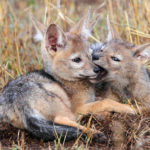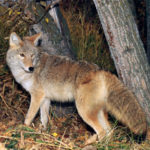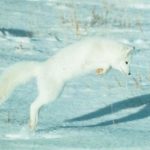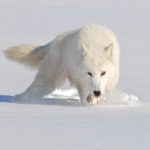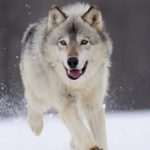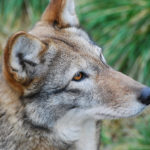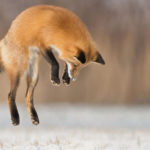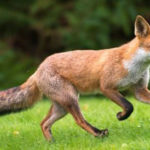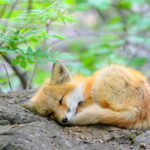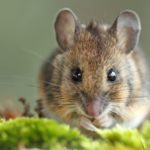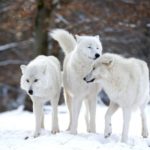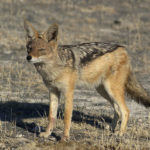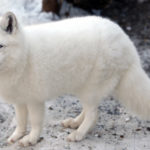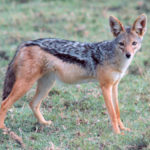Jackals
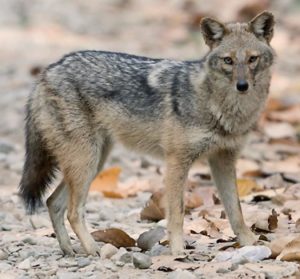 In appearance, jackals are like small wolves or coyotes, and in size jackals occupy a place between a fox and a wolf. Their muzzle is sharper than the wolf, but wider and dumber than the fox; the physique is dense, the legs are relatively long. The ears are short, slightly wider than the foxes, and are rounded on tops. The fluffy tail is almost one-third the length of the body and reaches the heels of the animal.
In appearance, jackals are like small wolves or coyotes, and in size jackals occupy a place between a fox and a wolf. Their muzzle is sharper than the wolf, but wider and dumber than the fox; the physique is dense, the legs are relatively long. The ears are short, slightly wider than the foxes, and are rounded on tops. The fluffy tail is almost one-third the length of the body and reaches the heels of the animal.
Fur is hard. The general color of the top of the body is from dirty-gray to greyish-red. To a large extent, the general background is blackened, the sides are lighter, with a much smaller mixture of black, but with a greater development of red tones. The bottom of the body on the belly is whitish-yellow, and on the chest is reddish-yellow. The tail is reddish-brown, with a black tip. Summer fur is slightly shorter and coarser than winter, and its color is more reddish. The body length of adults is 60-85 cm, the average weight is 8-10 kg, tail length is 20-30 cm.
Jackals are widespread in Central Africa, Central Asia, Southeast Europe and the Middle East. On the territory of the CIS, they live in the middle of Asia, in the Caucasus, sometimes found in Moldova. Jackals prefer dense thickets of reeds and shrubs on the plains, near lakes, rivers and seas. Slightly less often they are found in the foothills no higher than 1000 m above sea level, often live near populated areas.
For most of the year, all jackals are roaming family groups – flocks and singly. A flock usually consists of two mother animals and several juveniles, but young or casual loners may also join it. There are up to 10 individuals in a pack. Jackals are sedentary animals, they do not make seasonal migrations, but sometimes they go far enough from their habitat in search of food and appear in those areas where there was a mass death of wild ungulates or cattle. For jackets jackals usually use various natural depressions and niches, crevices among the stones, in rare cases, burrow holes, foxes, porcupines, sometimes dig them themselves.
Jackals are very smart and impudent predators. They are active mainly at night, but sometimes during the day. Before going hunting, predators produce a loud howl, very similar to a high scream, which is instantly picked up by all other jackals in the vicinity. They hunt more often alone or in pairs, sometimes in small groups. Predators cleverly creep up to the intended victim and instantly grasp it, and hunting together, they chase the prey on each other. The search for prey is carried out by jackals, trotting in shallow trot, sometimes stopping to listen and sniff. In places where large predators are found, jackals often follow them to enjoy the remnants of their prey.
